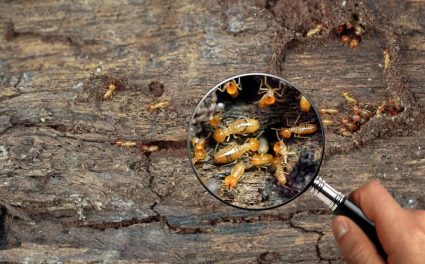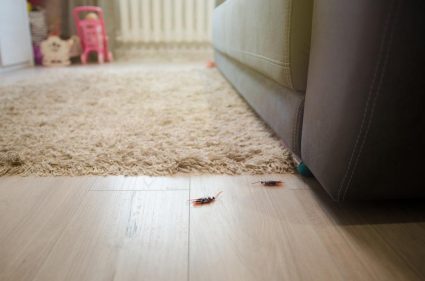
Fleas are a common problem in puppies, causing discomfort and potentially leading to health issues if left untreated. This comprehensive guide provides detailed information on what to do if your puppy has fleas, from recognizing the signs to effective treatment and prevention strategies.
If your puppy has fleas, begin by combing out the fleas with a fine-toothed, metal flea comb and giving your puppy frequent baths. Consult your vet for safe and effective flea treatments such as Nexgard, Bravecto, Advantage, Advocate, Advantix, or Seresto. Prevent future infestations by limiting outdoor time, maintaining a clean environment, and using vet-recommended flea control products. If infestation persists, consider professional pest control services.
Recognizing the Signs of Fleas in Puppies
Fleas are small, fast, and can be difficult to spot, but their effects on your puppy are noticeable. If your puppy is constantly scratching, biting, or chewing at their skin, it may be a sign of fleas. You might also notice skin irritation, redness, scabs, or other lesions on your puppy’s skin.
In severe cases, fleas can cause anemia due to blood loss, which may result in pale gums in your puppy. They can also transmit tapeworms, visible as segments in your puppy’s feces or around their hind end.
Immediate Steps to Take
If you suspect your puppy has fleas, it’s important to act fast. Start by using a fine-toothed, metal flea comb to remove adult fleas from your pet. Dispose of the fleas safely by putting them into a basin of soapy water to suffocate them.
Give your pet frequent baths, but be cautious of using flea shampoos as they can be too strong for young puppies. Consult your veterinarian for the best flea treatment option. Some products, like Capstar, are safe for puppies as young as 4 weeks old and weighing as little as 2 pounds.
Effective Flea Treatments
There are several effective flea treatments for puppies:
- Nexgard: A monthly oral flea and tick prevention in a soft, beef-flavored chewable tablet.
- Bravecto: A pork-flavored hydrolyzed chew that protects against fleas and ticks for 1 month.
- Advantage: A spot-on flea preventive applied directly to your pup’s skin.
- Advocate: Treats for fleas, heartworm, and intestinal worms.
- Advantix: Protects dogs from fleas, ticks, mosquitoes, sandflies, stable flies, and lice.
- Seresto: A flea/tick collar that is odorless, water-resistant, and protects against fleas, ticks, and lice for up to eight months.
Always consult your vet before starting any flea and tick treatment to ensure it’s safe and appropriate for your pet’s age and weight.
Preventing Future Flea Infestations
Prevention is key to keeping your puppy free from fleas. Limit your puppy’s outdoor time, bathe and brush them regularly, and check them for fleas often. Maintain a clean environment in your yard and consult your vet about flea control products suitable for your puppy.
Persistent Infestations
If the flea infestation persists despite treatment, ensure all pets in the household are treated. Clean your home thoroughly, including washing bedding, rugs, and pet bedding, and vacuuming and sweeping floors. Treat your home and yard with insecticides and insect growth regulators. If the infestation continues, consider consulting a professional pest control service.
Bathing a Puppy with Fleas
Bathe your puppy 1-2 times a week using a flea shampoo or a thorough bath in warm water and mild dish soap. After the bath, use a flea comb to remove any remaining fleas. It’s also essential to wash the puppy’s bedding in hot water and treat your house and yard for fleas to prevent reinfestation.
In conclusion, dealing with fleas in puppies requires prompt action, effective treatment, and diligent prevention efforts. Always consult with your vet for the best and safest options for your pet.
Frequently Asked Questions
Can I use home remedies to treat my puppy’s fleas?
While some home remedies like vinegar or baking soda may be suggested online, they are not as effective as veterinarian-approved treatments and can sometimes cause more harm than good. Always consult with your vet before trying any home remedies.
How long does it take for flea treatments to work?
Most flea treatments start working within 30 minutes to 24 hours. It’s important to continue the treatment as directed by your vet to ensure all life stages of the fleas are eradicated.
Can fleas infest humans too?
Yes, while fleas prefer animal hosts, they can also bite humans, causing itchy, red bumps. However, they cannot live on humans.
How often should I treat my puppy for fleas?
The frequency of flea treatments depends on the product used and the severity of the infestation. Some treatments are monthly, while others last for several months. Always follow the instructions on the product or as advised by your vet.
Can my puppy get fleas even if they are indoors most of the time?
Yes, fleas can enter your home on other pets, on humans, or through small openings like windows or doors. Even indoor pets should have regular flea prevention treatments.












